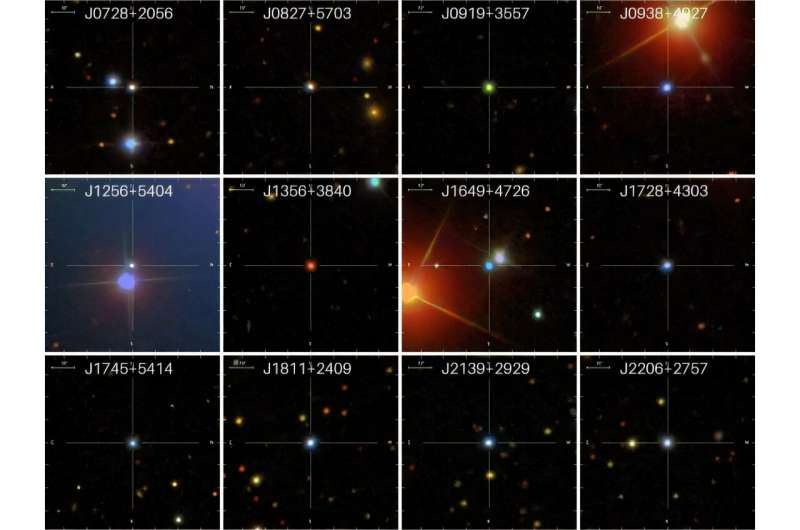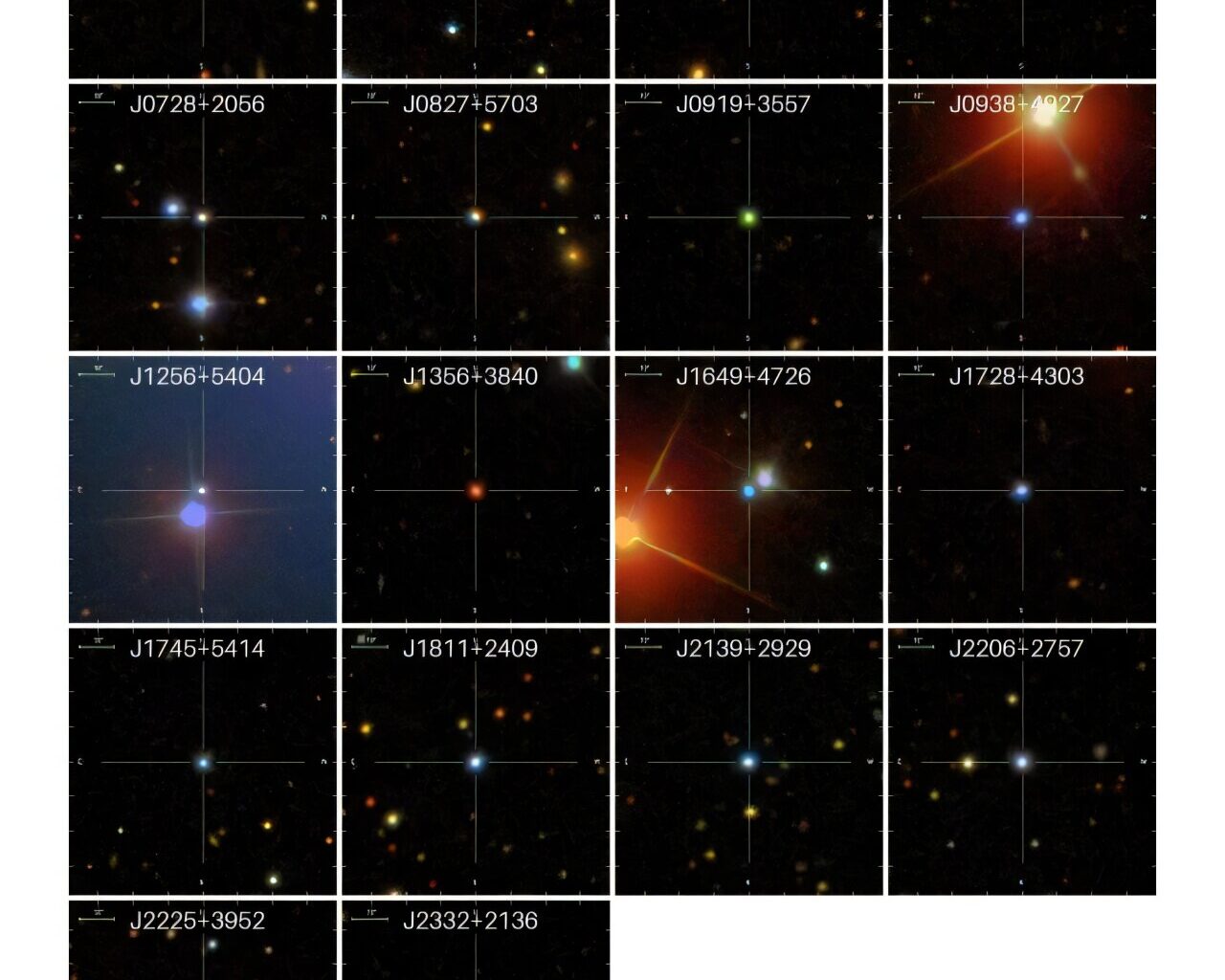
Cutout images of 18 newly discovered quasars that lie within the SDSS footprint but are not included in the SDSS DR16Q catalog. Credit: arXiv (2025). DOI: 10.48550/arxiv.2508.06028
Astronomers from Seoul National University, South Korea and elsewhere report the detection of 62 new luminous quasars as part of the All-sky BRIght, Complete Quasar Survey (AllBRICQS). The discovery was detailed in a research paper published August 8 on the arXiv preprint server.
Quasars, or quasi-stellar objects (QSOs), are active galactic nuclei (AGN) in the centers of active galaxies, powered by supermassive black holes (SMBHs). They showcase very high bolometric luminosities (over one quattuordecillion erg/s), emitting electromagnetic radiation observable in radio, infrared, visible, ultraviolet and X-ray wavelengths.
The AllBRICQS survey aims to identify previously undetected optically bright quasars. It finds quasar candidates more effectively than previous methods by utilizing data from the Wide-field Infrared Survey Explorer (WISE) catalog and precise parallax and proper motion measurements from Gaia Data Release 3 (DR3).
To date, 156 spectroscopically confirmed quasars have been identified as part of the AllBRICQS project, and now a team of astronomers, led by Seoul National University’s Yunyi Choi, has announced new quasar discoveries.
“Here, we report 62 new AllBRICQS quasars spanning various types, which include typical broad emission line quasars and the most luminous iron low-ionization broad absorption line quasars discovered to date,” the researchers wrote in the paper.
First of all, Choi’s team identified 75 quasar candidates in the northern hemisphere. Afterward, they confirmed the quasar status of 62 sources through spectroscopic observations using three ground-based telescopes in South Korea and China.
The newfound quasars have redshifts between 0.09 and 2.48, while their bolometric luminosities are within the range of 1–1,000 quattuordecillion erg/s. Therefore, the quasars reported in the paper are mostly bright with regard to the general QSO population.
One of the quasars detected by the new study, namely J0919+3557, was classified by recent observations as a galaxy at a redshift of 0.18. However, Choi’s team has refined its redshift to 2.36 and reclassified it as a weak-line quasar—a subclass of quasars characterized by unusually weak high-ionization lines.
The astronomers underlined that among their discoveries are rare and notable objects, including an iron low-ionization broad absorption line quasar (FeLoBAL). The new FeLoBAL, which received the designation J1356+3840, turns out to be the most luminous quasar of this type to date.
Summing up the results, the authors of the paper noted that their sample of new quasars will serve as a valuable resource for studies of quasar physics, black hole growth, feedback processes, and host galaxy properties.
“These confirmed AllBRICQS quasars provide a valuable resource for future research into quasar evolution, black holes, their environments, and their host galaxies across multiple wavelengths,” the scientists concluded.
Written for you by our author Tomasz Nowakowski, edited by Stephanie Baum, and fact-checked and reviewed by Robert Egan—this article is the result of careful human work. We rely on readers like you to keep independent science journalism alive.
If this reporting matters to you,
please consider a donation (especially monthly).
You’ll get an ad-free account as a thank-you.
More information:
Yunyi Choi et al, AllBRICQS: The Discovery of Luminous Quasars in the Northern Hemisphere, arXiv (2025). DOI: 10.48550/arxiv.2508.06028
Journal information:
arXiv
© 2025 Science X Network
Citation:
Astronomers discover dozens of new luminous quasars (2025, August 19)
retrieved 19 August 2025
from https://phys.org/news/2025-08-astronomers-dozens-luminous-quasars.html
This document is subject to copyright. Apart from any fair dealing for the purpose of private study or research, no
part may be reproduced without the written permission. The content is provided for information purposes only.
